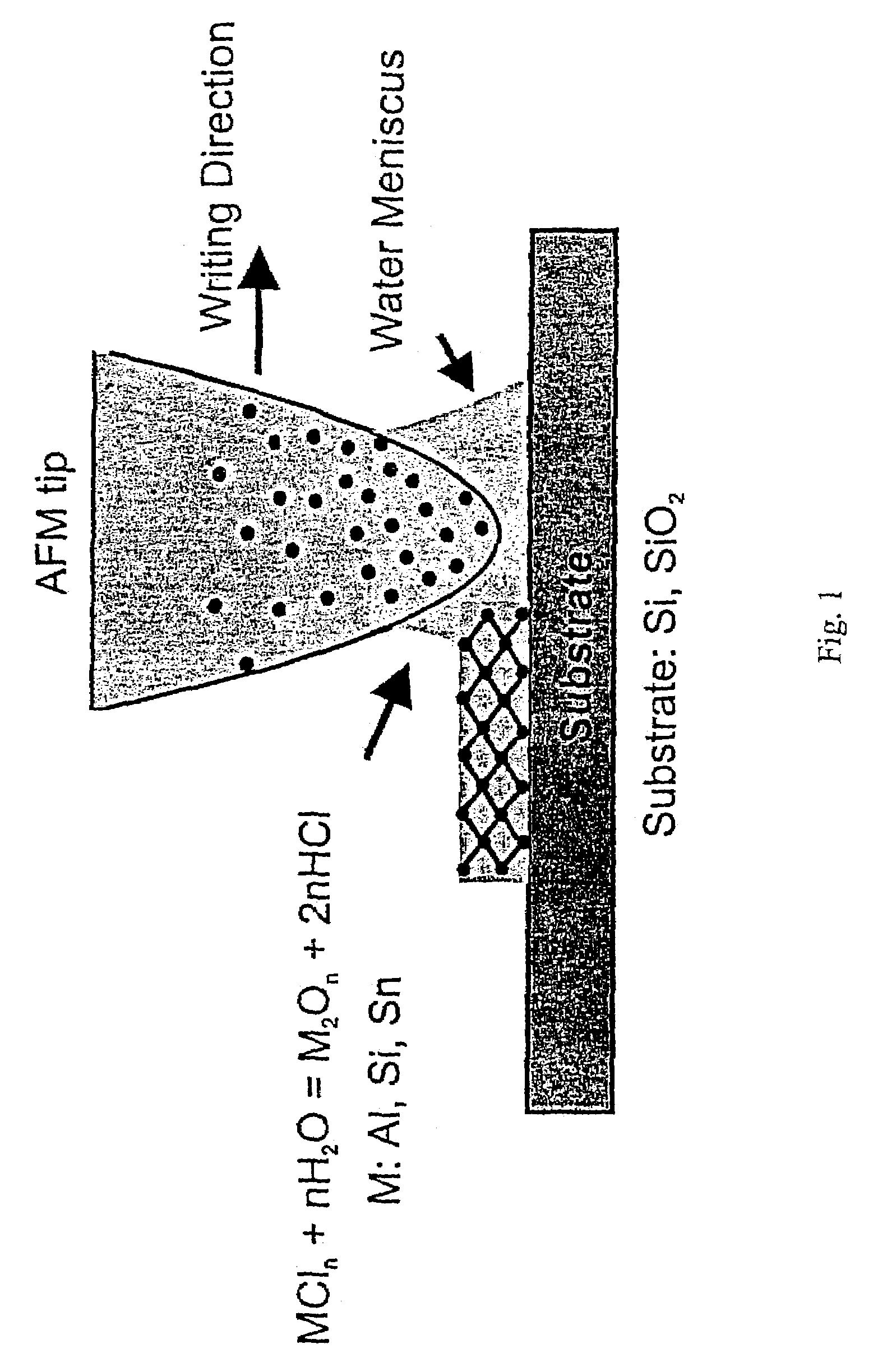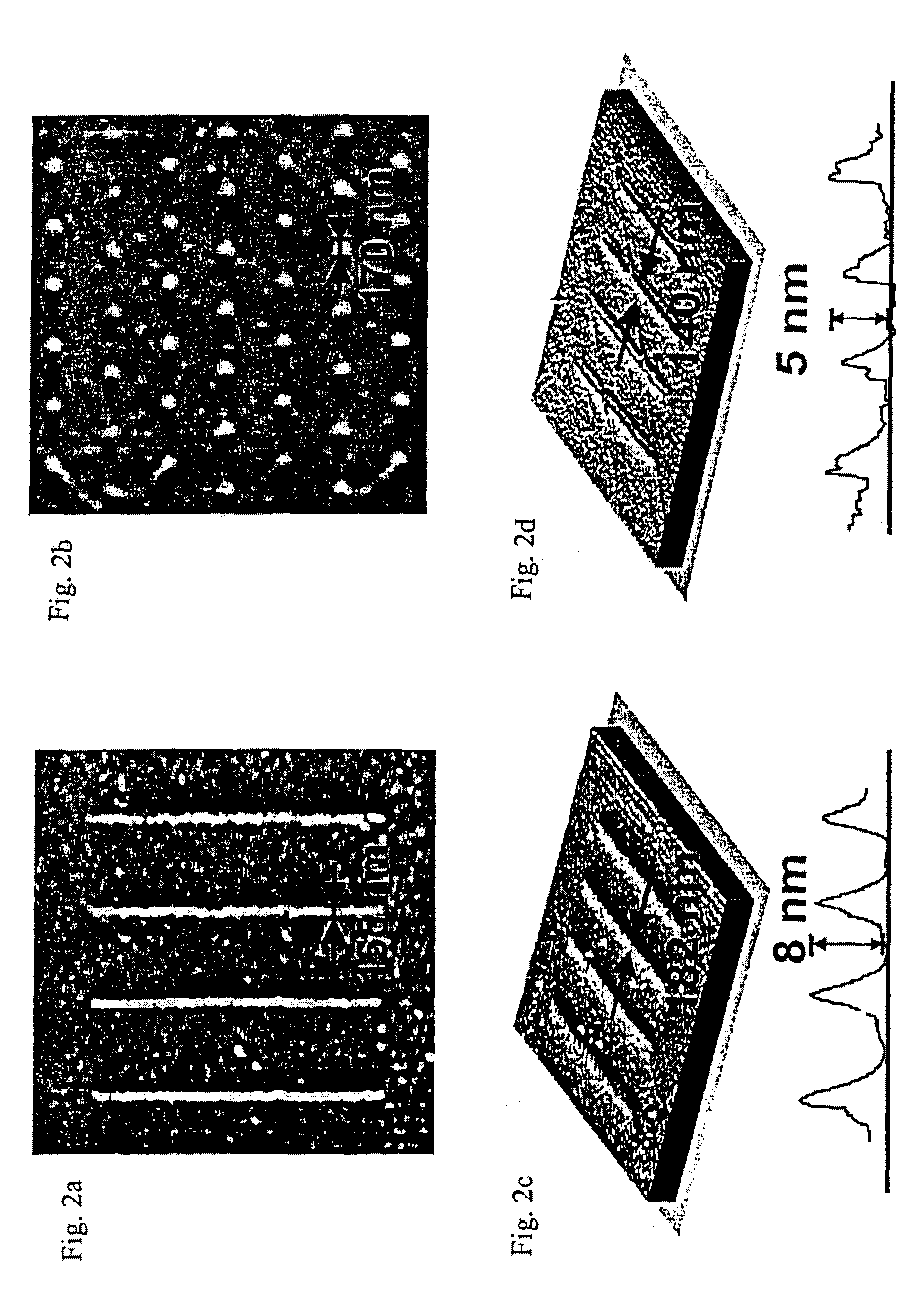Patterning of solid state features by direct write nanolithographic printing
- Summary
- Abstract
- Description
- Claims
- Application Information
AI Technical Summary
Benefits of technology
Problems solved by technology
Method used
Image
Examples
working examples
Experimental
[0083]A ThermoMicroscopes CP AFM and conventional silicon nitride micro-cantilevers (force constant of 0.05 N / m) were used for all patterning experiments. In each experiment, the tip was coated by dipping it into the as-prepared sols at room temperature for 20 seconds. All patterning experiments were conducted under ambient conditions without rigorous control over humidity (˜40%) and temperature (˜20° C.) with a tip-surface contact force of 0.5 nN. To minimize the piezo tube drift, a 90 μm scanner with closed loop scan control was used for all patterning experiments. Subsequent imaging of the generated patterns was done with the ink-coated tip under conditions identical to those used for patterning but at a higher scan rate (6 Hz).
[0084]In a typical experiment, an inorganic precursor solution (sol) was prepared by dissolving 1 g of the block copolymer poly (ethylencoxide)-b-poly (propyleneoxide)-b-poly (ethyleneoxide), (EO20PO70EO20) (Pluronic P-123, BASF) in 10 g of eth...
examples 1 and 2
[0085]Dots, lines and complex patterns comprised of tin-oxide and aluminum oxide have been generated on silicon and silicon oxide (>600 nm oxidation layer) substrates, as shown in FIG. 2. For example, 155 nm wide parallel lines made of tin-oxide have been constructed on SiO2 by moving a tip coated with the composite ink (SnCl4 and P-123) across the substrate (0.2 μm / sec). Similarly, dots consisting of Al2O3 were generated on a Si substrate using a tip coated with (AlCl3 and P-123) by successively bringing the tip in contact with substrate for 1 s / dot intervals. These structures maintain their shapes even after repeated imaging (5 times) and are indefinitely stable (>1 month) under ambient conditions.
example 3
[0086]A Si sol (comprised of SiCl4 and P-123) was patterned onto a silicon oxide substrate in the form of parallel lines. The composition of the lines is expected to be a mixture of SiOX and the polymer. When heated in air at 400° C. for 2 hour, the copolymer surfactant is expected to combust leaving a SiO2 nanostructure. Consistent with this hypothesis, an AFM image collected from the same area post heating indicated that the pattern height decreases from 8 nm to 5 nm, FIG. 2c and 2d.
PUM
| Property | Measurement | Unit |
|---|---|---|
| Fraction | aaaaa | aaaaa |
| Diameter | aaaaa | aaaaa |
| Diameter | aaaaa | aaaaa |
Abstract
Description
Claims
Application Information
 Login to View More
Login to View More - R&D
- Intellectual Property
- Life Sciences
- Materials
- Tech Scout
- Unparalleled Data Quality
- Higher Quality Content
- 60% Fewer Hallucinations
Browse by: Latest US Patents, China's latest patents, Technical Efficacy Thesaurus, Application Domain, Technology Topic, Popular Technical Reports.
© 2025 PatSnap. All rights reserved.Legal|Privacy policy|Modern Slavery Act Transparency Statement|Sitemap|About US| Contact US: help@patsnap.com



